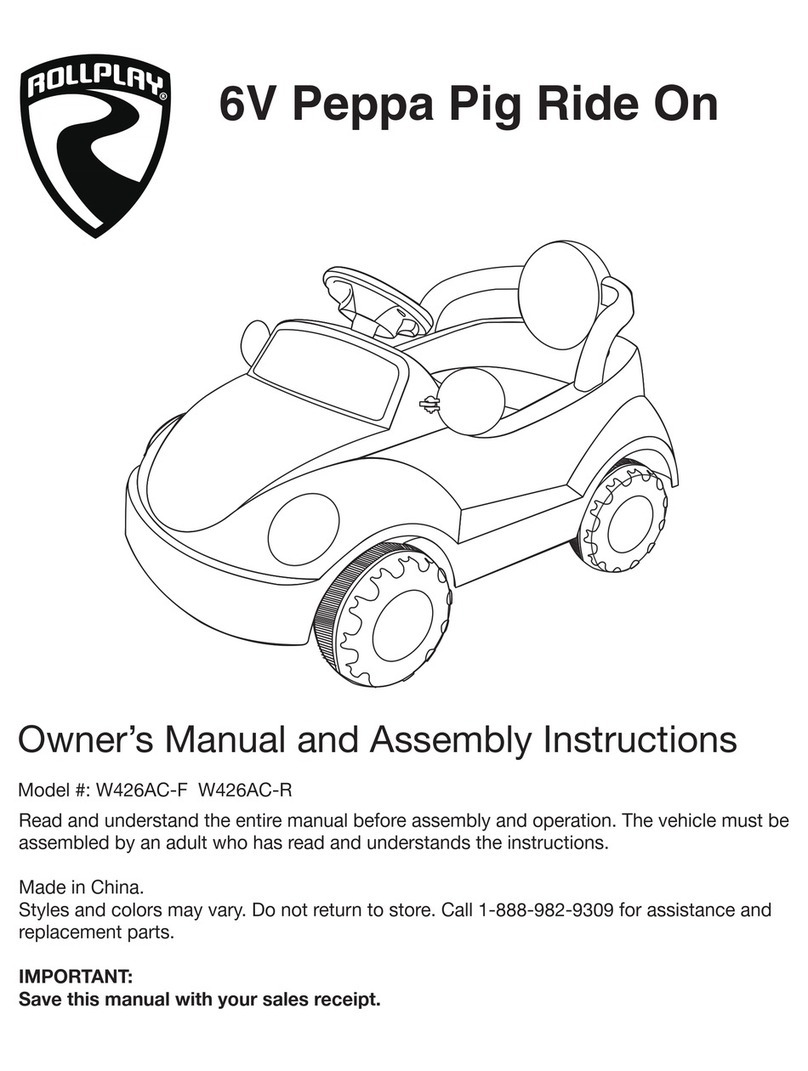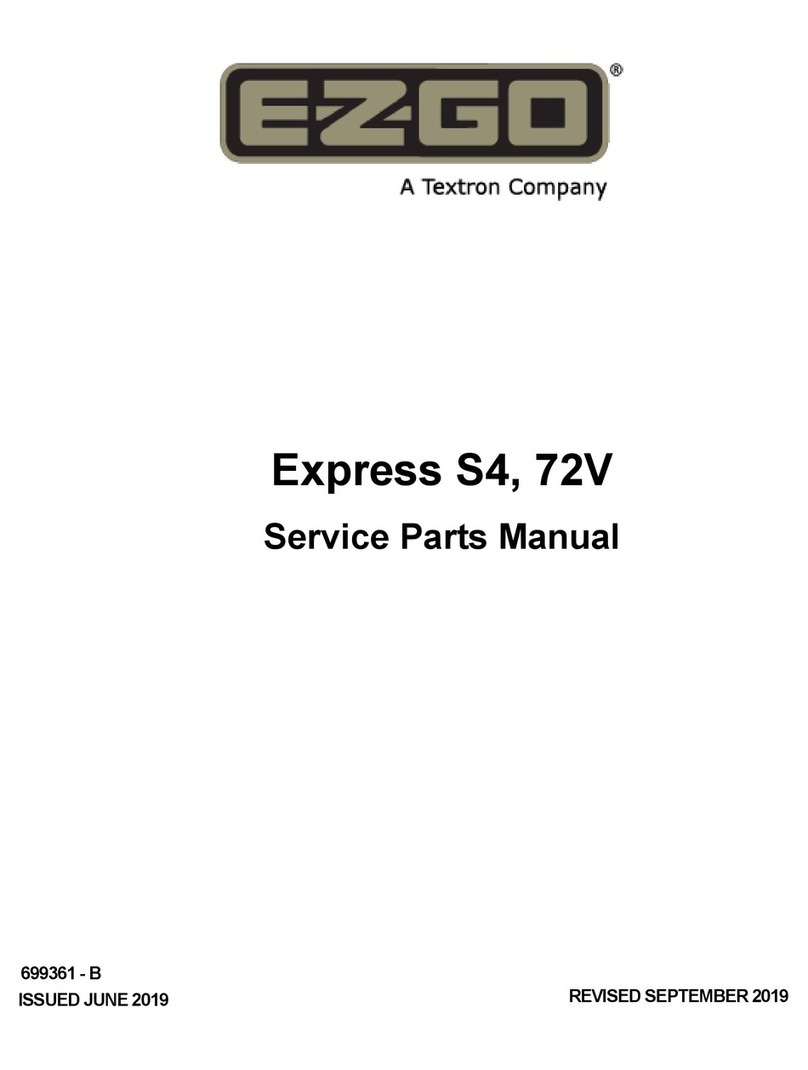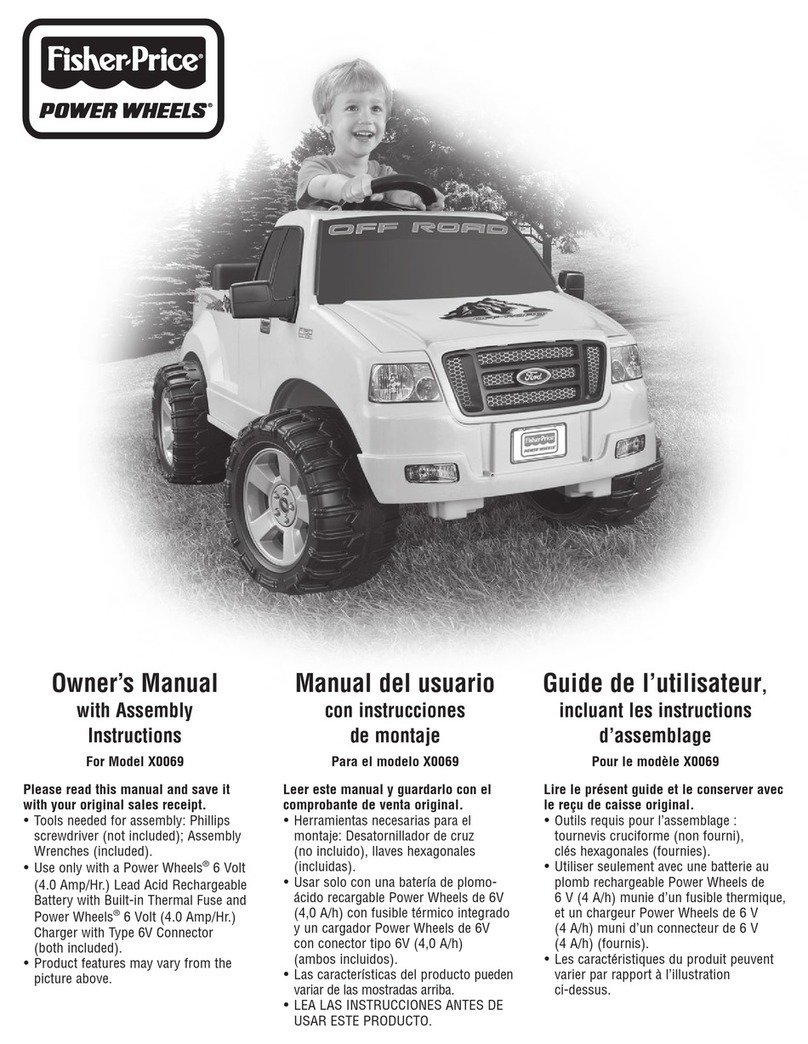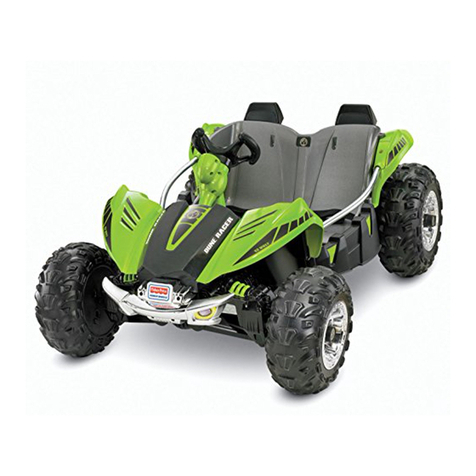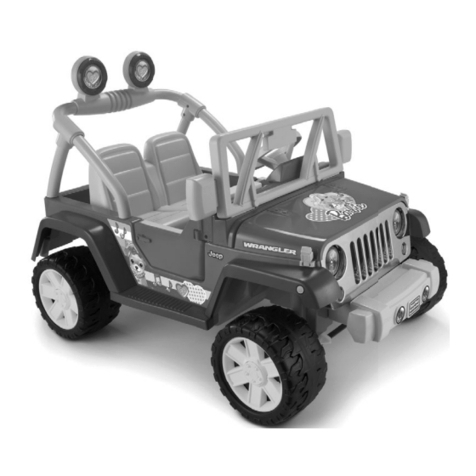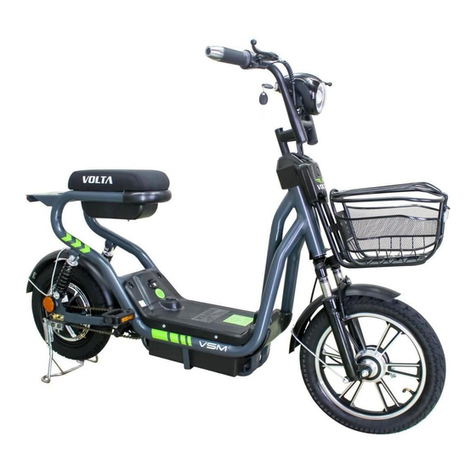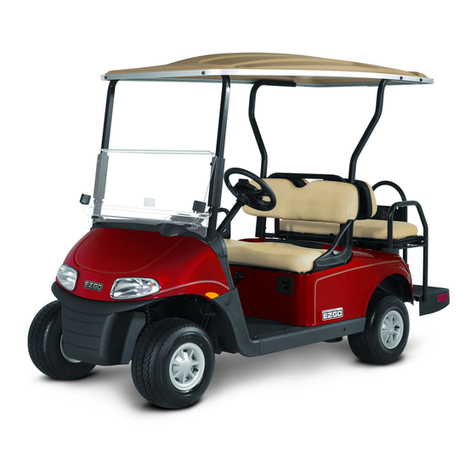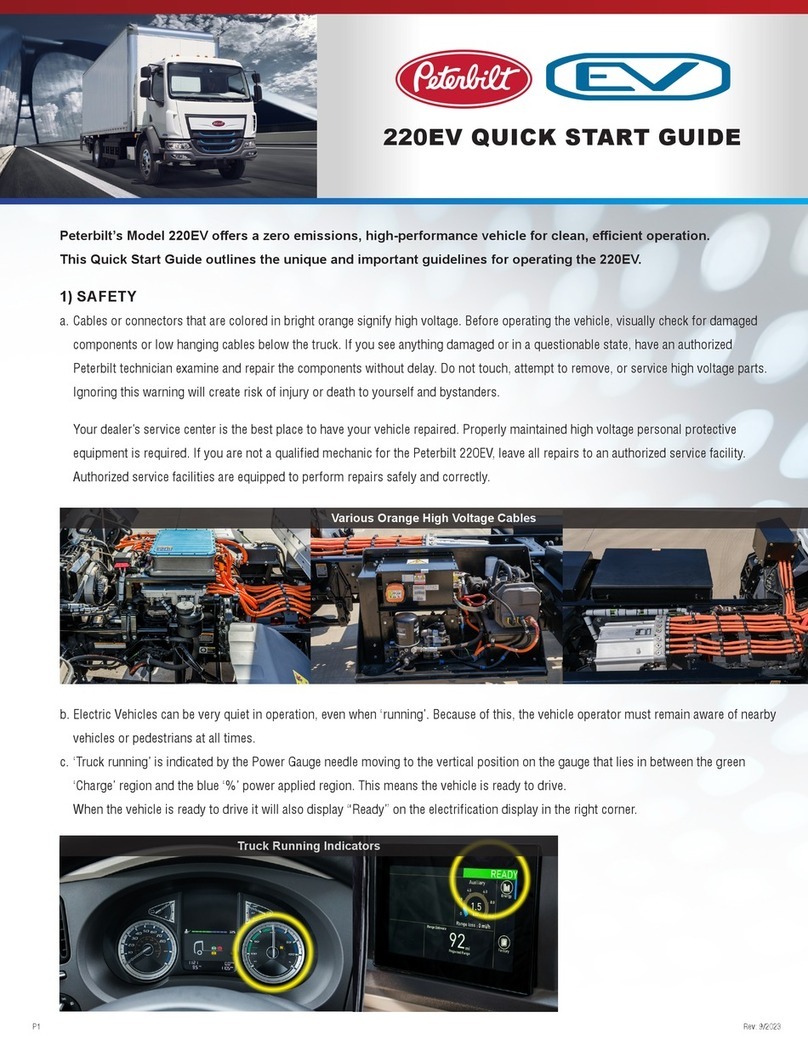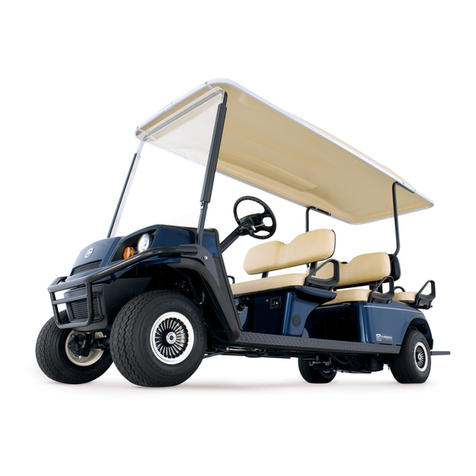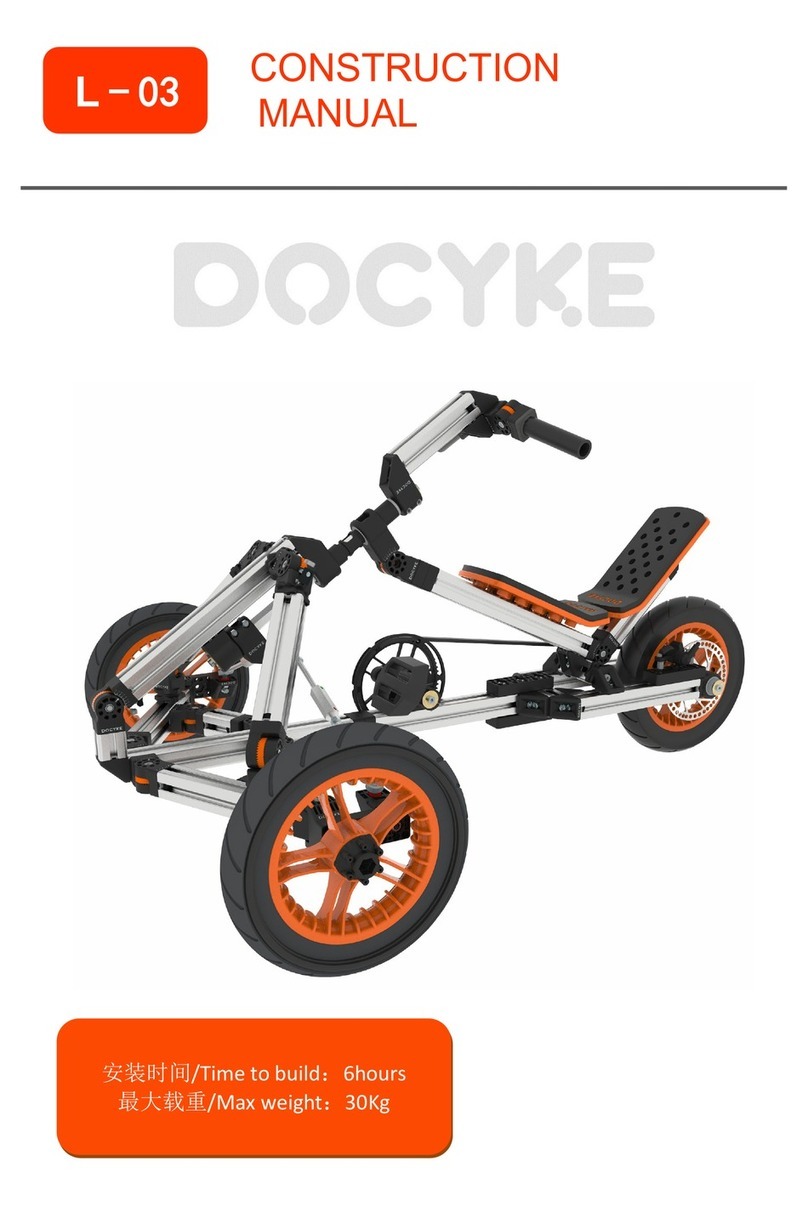9
eCAUTION
SPRECAUCIÓN
eUse the charger in dry
locations only.
SUsar el cargador en
lugares secos únicamente.
eImportant Notes
• Your new battery must be charged for at
least 18 hours before you use it in your
vehicle for the first time.
• You do not need to remove the battery from
your vehicle to recharge it.
• The battery must be upright while charging.
• The charger is not a toy.
• Do not short circuit the battery.
• We recommend that you start charging your
battery before beginning assembly of your
new vehicle.
• Before charging the battery, examine the
battery case for cracks and other damage
which may cause sulfuric acid (electrolyte)
to leak during the charging process. If
damage is detected, do not charge the
battery or use it in your vehicle. Battery
acid is very corrosive and can cause severe
damage to surfaces it contacts.
• Do not charge the battery on a surface
which could be damaged by the acid
contained inside the battery. Take
precautions to protect the surface
on which you charge your battery.
• Use only a Power Wheels®12 volt charger
with type “12V” connector (120 VAC or
230/240 VAC, 60 Hz, 28W with an output
of 12 VDC, 1200mA) to charge your Power
Wheels®rechargeable 12 volt battery.
SNotas importantes
• La nueva batería debe ser cargada
durante un periodo de por lo menos
18 horas antes de usarla con el vehículo
por primera vez.
• Se recomienda empezar a cargar la
batería antes de empezar con el montaje
del vehículo.
• La batería debe estar en posición vertical
durante el proceso de carga.
• El cargador no es un juguete.
• No provocar cortocircuitos con la batería.
• No es necesario sacar la batería del vehícu-
lo para cargarla.
• Antes de cargar la batería, verificar que el
compartimento no tenga rajaduras o daños
que puedan causar que el ácido sulfúrico
(electrolitos) se derrame durante el proceso
de carga. Si se detecta algún daño, no car-
gar la batería ni usarla en el vehículo. El
ácido de la batería es muy corrosivo y
puede causar daños severos a las superfi-
cies con las que entra en contacto.
• No cargar la batería en una superficie que
se pueda dañar con el ácido contenido en
la batería. Tomar las debidas precauciones
para proteger la superficie en la que se
vaya a cargar la batería.
• Usar únicamente un cargador Power Wheels
de 12V con conector de 12V (120 V o 230/
240 V - 60 Hz 28W con una salida de
12 Vcc 1,2A) para cargar la batería
recargable Power Wheels de 12V.
eAbout Thermal Fuses
Your Power Wheels®12 volt battery is
equipped with a built-in thermal fuse.
The thermal fuse is a self-resetting safety
device which automatically “trips” and
shuts down operation of the vehicle if
the vehicle is overloaded or the driving
conditions too severe. Once a fuse has
“tripped”, it will automatically reset itself
after approximately 25 seconds and allow
the vehicle to resume normal operations.
To avoid repeated automatic shutdowns,
do not overload the vehicle by exceeding
the 59 kg (130 lb) maximum weight
capacity or by towing anything behind the
vehicle. Avoid severe driving conditions,
such as driving up very steep slopes or
running into fixed objects, which can cause
the wheels to stop spinning while power is
still being supplied to the motors. Make
sure your child stops the vehicle before
switching speeds or direction.
If a thermal fuse in a battery continually
trips under normal driving conditions,
please contact Power Wheels®
Consumer Relations.
SFusibles térmicos
La batería Power Wheels de 12V incluye
un fusible térmico integrado. Los fusibles
térmicos son dispositivos de seguridad que
se restablecen por sí solos; se “bloquean”
y automáticamente detienen la operación
del vehículo si éste está sobrecargado
o si las condiciones de manejo son muy
severas. Después de que un fusible se
“bloquea”, se restablece automáticamente
después de aproximadamente 25 segun-
dos y el vehículo reanuda su operación
normal. Para evitar que se detenga
repetidamente el vehículo de manera
automática, no cargue el vehículo en
exceso del peso máximo de 59 kg ni
remolque nada con el mismo. Evite condi-
ciones de manejo severas, tales como
manejar en subidas muy empinadas o
chocar con objetos estáticos, que pueden
causar que las ruedas dejen de girar
mientras se sigue transfiriendo energía
al motor. También cerciórese de que su
hijo detenga el vehículo antes de cambiar
de dirección o velocidad.
Si un fusible térmico se bloquea
continuamente bajo condiciones de
manejo normales, sírvase ponerse
en contacto con el departamento de
Atención al cliente de Power Wheels.
e• Plug the charger connector into the
battery .
• Plug the charger into a standard wall
outlet .
Note: If power flow to the wall outlet is
controlled by a switch, make sure the switch
is “ON”.
• Before first-time use, charge the battery
for at least 18 hours. Never charge the
battery longer than 30 hours.
• Recharge the battery for at least 14 hours
after each use of your vehicle. Do not
charge the battery longer than 30 hours.
• Once the battery is charged, pull firmly on
the charger connector to disconnect it from
the battery. Unplug the charger from the
wall outlet. The battery is now ready to be
installed in your vehicle. Please see the
Battery Installation section on page 23 for
detailed instructions on installing your
battery. If your battery is already installed in
your vehicle, simply re-connect the motor
harness connector to the battery and lower
and fasten the hood.
S• Enchufe el conector del cargador en la
batería .
• Enchufar el cargador en un tomacorriente
estándar de pared .
Nota: Si el flujo de corriente al tomacorriente
es controlado por un interruptor, verificar que
el interruptor esté “ACTIVADO”.
• Antes del primer uso, cargar la batería
durante un periodo de por lo menos 18
horas. Nunca cargar la batería por más de
30 horas.
• Recargar la batería por lo menos 14 horas
después de cada uso del vehículo. No
cargar la batería por más de 30 horas.
• Después de que la batería esté cargada,
desconectar el conector del cargador del
conector de la batería. Desenchufar el
cargador del tomacorriente. La batería
está cargada y lista para instalarse en el
vehículo. Leer la sección de Instalación
de la batería en la página 23 para obtener
instrucciones detalladas sobre cómo
instalar la batería. Si la batería ya se
encuentra en el vehículo, simplemente
enchufar el conector del arnés del motor
en la batería y cerrar y asegurar el cofre.
eBattery
SBatería
eCharger Connector
SConector del
cargador

